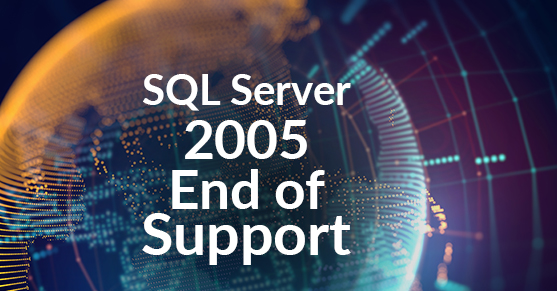SQL Server 2005 extended support ends April 12, 2016. What this means to SQL 2005 users is no more security updates or hotfixes. What it means to us as DBA’s is we’re in a situation we never want to be in, where our database platform is down or compromised with no way to fix things, and no way to get technical support from Microsoft.
At XTIVIA, we are moving those customers who continued to use SQL 2005 onto SQL Server 2014. What caused them to wait this long to upgrade? There are numerous reasons.
- Their application wasn’t certified for any version past SQL 2005.
- Their application vendor was no longer in business or wasn’t providing updates for their particular application.
- “If it isn’t broken I’m not going to fix it”
- My hardware won’t support it.
What Can You Do Now?
If your application isn’t certified past SQL 2005 or the vendor no longer supports your application you still have options. XTIVIA helps customers migrate to the newer platform by helping them set up a test system using 2014 with a copy of their current data. Xtivia helps these customers test and troubleshoot their software against SQL 2014. When everyone has confidence things are working smoothly we help them with the final migration and provide any last minute troubleshooting and performance tuning.
If you have a system that isn’t currently broken or your hardware can’t handle SQL 2014 then you should think seriously about what will happen to your maintenance costs going forward. Keeping old systems running doesn’t get any cheaper over time. It makes sense to migrate to SQL 2014 and new physical hardware or the cloud now rather than waiting until the software encounters a problem or the old hardware fails.
Some of the benefits you’ll get, that our other clients have seen, by moving to SQL 2014 are:
- Improved performance overall. In-memory OLTP transactions for SQL 2014 are dramatically faster than anything available in SQL 2005.
- High availability improvements. SQL 2014 supports AlwaysOn, database mirroring and failover clustering. The implementation of AlwaysOn provides data-safety as well as allowing workloads for things like reporting and backups to be moved away from production servers. Improvements in database mirroring and failover clustering give you improvements in performance and reliability.
- Security enhancements include user-defined roles, auditing capabilities, backup encryption and transparent data encryption.
- Enhanced data support for Filestream data type, spatial data and full-text search with unstructured data files.
- In addition, there is better query optimization, support for Powershell 2, and better support for ANSI SQL standards.
In short, moving to SQL Server 2014 eliminates potential problems and provides a substantial set if improvements. It also gets you out of an undesirable and risky situation where there are no more security updates, hotfixes or technical support available from Microsoft for SQL Server 2005. You have until April 12, 2016, so don’t wait too long, and contact us if you want us to help you evaluate your options.

